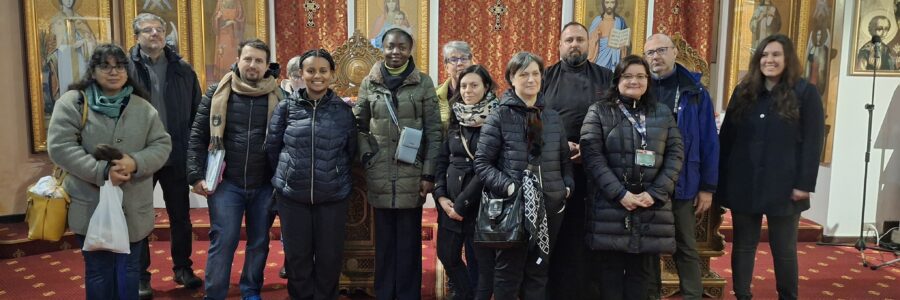
The Migrantour intercultural walks are not rigid and always the same; rather, they are constantly evolving, and can be adapted to the needs of the group, to special events and cultural occasions, to the personal history and interests of the intercultural companion proposing the walk, or to the new relationships that are formed with the local realities of the neighbourhoods that the walks describe.
On Saturday 22 March Migrantour Bergamo’s walk ‘Diversity at a few steps’ was enriched by the addition of a new and special stop, experienced for the first time with the participants who chose to join us despite the rain. The free event was part of Fileo’s thematic week ‘Fatiche e Sfide dell’Incontro – Pregiudizi, Stereotipi, Discriminazioni’, a week of exhibitions, meetings, workshops and book presentations on the occasion of the International Day for the Elimination of Racial Discrimination.
After a walk through the Malpensata neighbourhood in which hostile architecture, myths about Roma and Sinti communities and the importance of the railway station as a place of migration, were discussed and after tastings of Romanian and Latin American specialities, the group headed to the Romanian Orthodox Church in Bergamo, where they were welcomed by the faithful present and Father Bogdan Filip.
Here, the participants of the walk were able to admire the beauty of the prayer space with its traditional gold-backed icons covering almost the entire walls and the red carpet on the floor where most of the faithful stand for the duration of the liturgy. Father Bogdan Filip was more than willing to share his story and tell some details about the differences, but especially the points of union, between the Orthodox and Catholic traditions and liturgies, and especially about Easter, which this year falls on the same day for both Christian denominations.
When asked by a participant about the motivations behind allowing Orthodox priests to marry and have children, Father Bogdan Filip replied: ‘If one of my faithful confesses to me that he has problems in his family, how could I understand what he is talking to me about and give him the right advice?’
Thanks are due to Roxana and Sabrina for preparing the text.
